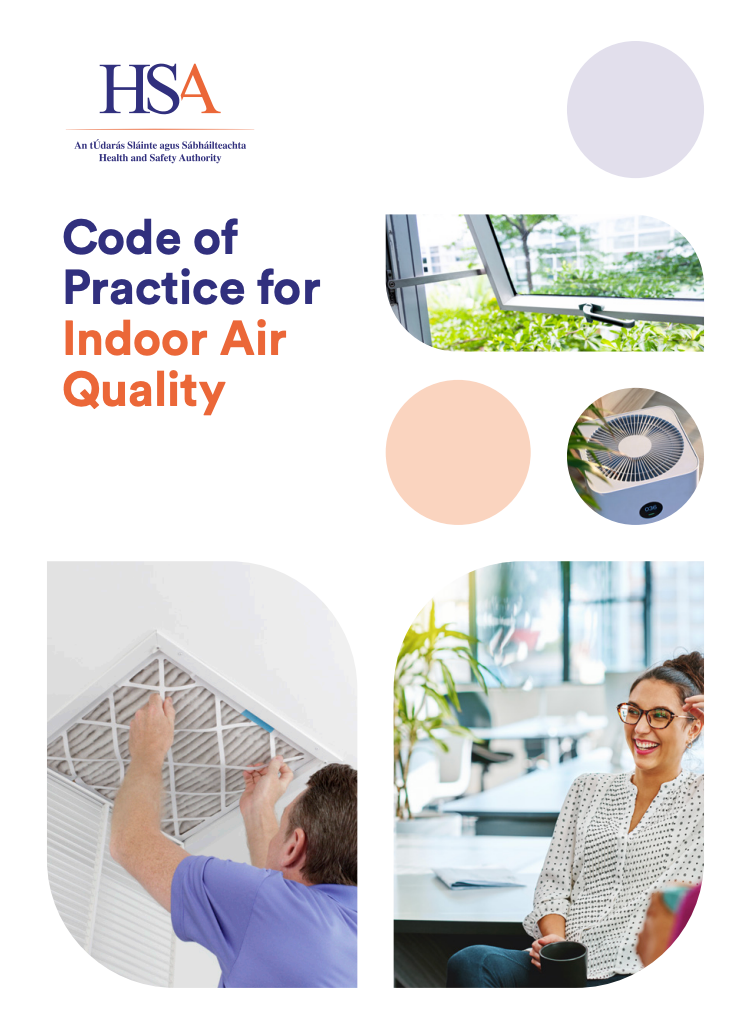The importance of maintaining and regulating indoor air quality in office environments is often overlooked. Doing so is vital for safeguarding employees' well-being, improving productivity, and establishing comfortable working conditions.
Under stringent laws, employers must provide a workplace with proper ventilation and free from health-harming pollutants. In this article, the air assessment experts at Ultra Protect list seven key strategies to ensure the IAQ in your office remains compliant and healthy.
1. Ventilation
Ventilation strategies require minimal effort and are likely the most cost-effective way to dilute indoor pollutants. Indoor air can stagnate, trapping allergens and accumulating particulate matter, including microbial particles.
To mitigate health concerns attributed to poor ventilation, you can establish proper airflow, allowing fresh outdoor air to flow through your space.
Keep Air Vents Unobstructed:
To avoid air stagnancy, it's vital to ensure all air vents are free from obstruction. Keep furniture, storage units, and general office equipment away from ventilation points; this will prevent the buildup of indoor air pollutants.
Provide Natural Airflow:
Opening windows and doors is a simple but effective practice to combat indoor pollutants with fresh air circulation. Of course, this method is weather-dependent and, as such, best used during warmer months.
2. Controlling Humidity
Maintaining control over humidity levels is a sure way to prevent the growth of mould and mildew. Not only are these harmful to respiratory health, they can also be detrimental to the integrity of your office building.
Dehumidifiers:
An optimal indoor humidity level is between 30% and 50%. Use a dehumidifier to reduce dampness and condensation if your office environment suffers from excess moisture. Doing so will eliminate the ideal breeding conditions for mould growth.
Humidifiers:
While a dehumidifier reduces humidity, a humidifier will add moisture to dry air, optimising indoor environments for employees prone to respiratory irritation, dry skin, and asthmatic symptoms.
If you’ve noticed any evident changes in humidity, such as in the case of mould, we recommend an
urgent mould removal to safeguard employee health and your property’s integrity.
3. Air-Purifying Plants
Having a selection of plants dotted around your office not only serves the mental well-being of employees, but specific species are capable of purifying the air. These indoor plants are often easy to care for, require minimal upkeep and improve air quality by absorbing pollutants.
Here are some of the best office plants for air quality:
- Golden Pothos
- Trailing Jade Plant
- Aloe Vera
- Snake Plant
- Peace Lily
- Rubber Plant
Placing Your Plants:
To get the most out of the purification qualities of your office plants, ensure you strategically distribute them. Not only will this maximise their efficiency, but it will also benefit your office's overall aesthetic.
4. HVAC Maintenance
Regular service checks on heating, ventilation, and air condition systems are crucial for supporting, maintaining and improving indoor air quality.
At Ultra Protect, we provide
internal air quality assessments, including routine inspections on office HVAC systems, ensuring air filters are changed when recommended and systems continue functioning without hindrance.
.
5. Eliminate Indoor Pollutants
Employers are responsible for ensuring employees' habits don't adversely affect other employees—this includes adhering to compliance laws regarding indoor air quality and enforcing strict regulations, such as no-smoking policies (tobacco and vaping) within the office or surrounding areas.
Another way to eliminate sources of indoor air pollution is to ensure cleaning products are stored correctly. If cleaning is outsourced to a third party, communicate that cleaners must store chemicals and potentially hazardous products in well-ventilated areas.
6. Employee Responsibility
Raising awareness and encouraging proactive behaviour can lead to sustained improvements in air quality. Although employee well-being is partially the responsibility of their employer, employees can also play a role in facilitating a safer working environment should they have access to the proper tools and information.
Educate: Provide training on best practices to educate your team about the value of air quality and how they can contribute.
Encourage: Establish a structure that allows employees to report air quality issues, ensuring a timely response and creating an airtight health and safety culture.
7. inBiot & Smart Buildings
Innovative systems like inBiot that analyse key environmental characteristics such as CO2, humidity, and particulate matter, are leading a dynamic shift towards intelligent air quality monitoring. By gathering and interpreting data, inBiot gives users more measured responses in regards to ventilation, filtration, and overall air management.
One key advantage of integrating smart air quality systems into office buildings is that they allow for automation. Instead of relying on manual checks or waiting for employees to complain of discomfort,
smart buildings continuously monitor conditions and can trigger automatic adjustments throughout the day.
inBiot's solutions allow businesses to shift beyond traditional purifying mechanisms and assessments by instantly evolving data into continual, automated air quality improvements. These quickened, instantaneous responses help organisations create a healthier and more productive workspace with data at the helm.
A Healthier Workplace Is One Breath Away
Improving office air quality is not just about comfort—it's crucial to employee health, productivity, and overall well-being. Poor air quality may result in respiratory dysfunctions, fatigue, and impaired concentration, impacting turnover and engagement.
As such, organisations should aim to facilitate a healthier and more sustainable workplace. Many approaches can be taken to improve air quality, either through innovative systems or small practical changes like opening windows and doors to encourage fresh air circulation.
For more information,
contact our team of air quality experts, and let's make fresh, breathable air a permanent feature of your office.







